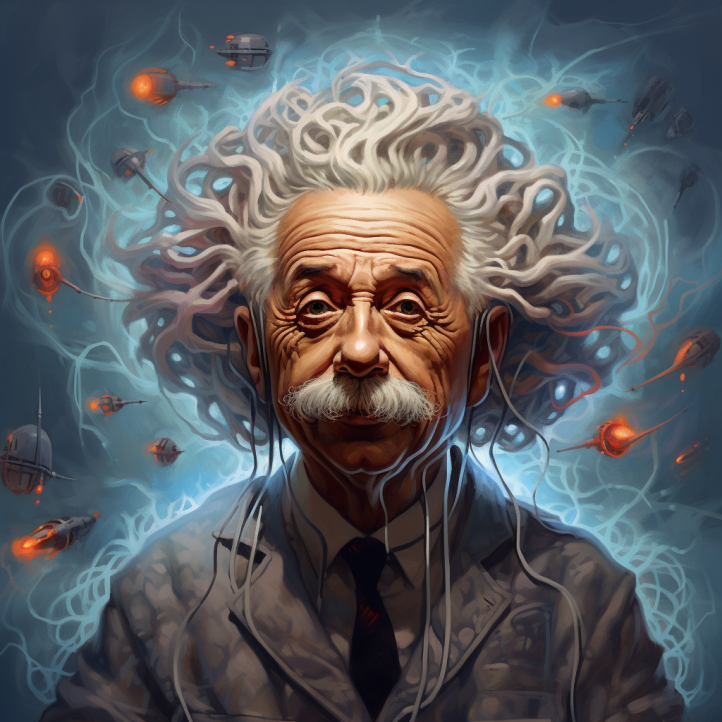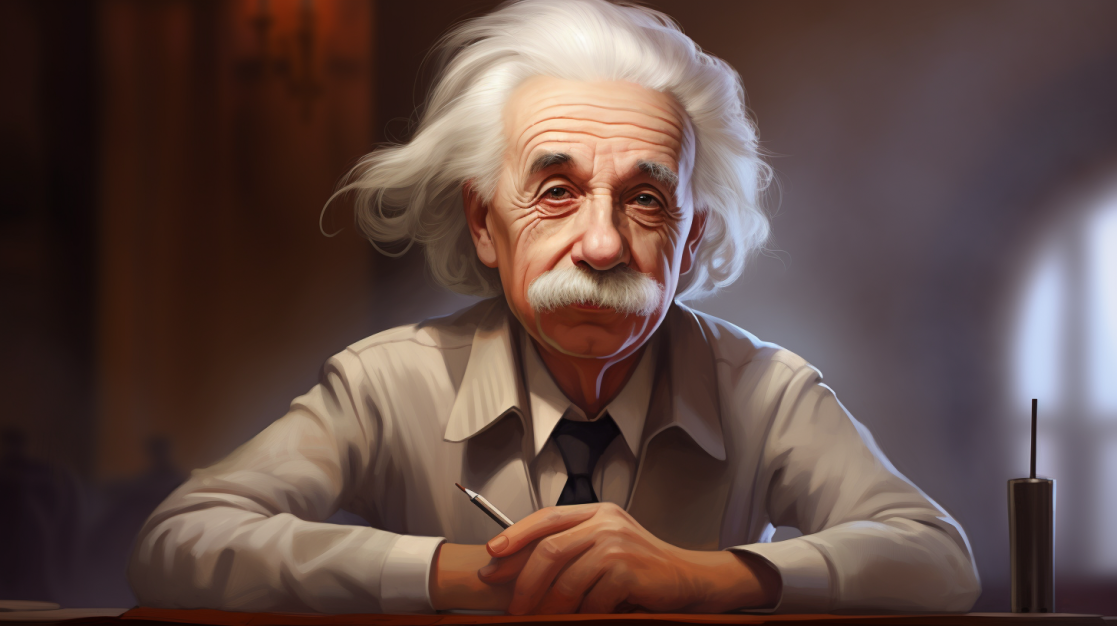Albert Einstein is widely regarded as one of the greatest physicists and intellectuals in human history.
His theories of relativity revolutionized our understanding of space, time, gravity and energy.
Not surprisingly, there has been great interest in understanding if Einstein’s brain had unique anatomical features that could explain his extraordinary cognitive abilities.
Several studies conducted over the past few decades have suggested some distinctive characteristics in Einstein’s brain.
However, a critical examination of these studies reveals major weaknesses that undermine the validity of drawing any conclusions.
Key Facts:
- Multiple studies have reported anatomical abnormalities in Einstein’s brain, including increased glia cells, peculiar folding patterns, and enlarged corpus callosum.
- These studies suffer from lack of proper controls, small sample sizes, flawed methodology and overinterpretation of results.
- Einstein’s brain was extracted and preserved in a non-optimal manner that likely introduced anatomical artifacts.
- Comparisons were made to single “average” brains rather than statistically meaningful control groups.
- The reported anatomical variations fall within normal range and have been found in both healthy and diseased brains.
- Any causal links between Einstein’s neuroanatomy and his cognitive abilities are highly speculative and unsupported.
- Einstein’s musical training from childhood likely also shaped his brain development in important ways.
- The studies fail to provide insights into neurophysiological processes underlying Einstein’s thought processes.
Source: Brain Struct Funct.
Einstein: A Single, Preserved Brain as the Basis for Grand Conclusions
In 1955, pathologist Thomas Harvey removed Albert Einstein’s brain during an autopsy and preserved it in formalin.
Several decades later, Harvey agreed to let a small group of researchers examine Einstein’s brain, resulting in a series of high-profile studies.
In 1985, Diamond et al. reported that Einstein’s brain had a higher ratio of glia to neurons in the cerebral cortex compared to control brains.
Glia are support cells that nourish, repair and maintain neurons.
The authors speculated that this increased “glial brace” may have enhanced and protected Einstein’s neural networks.
In 1999, Anderson and Harvey noted that Einstein’s prefrontal, somatosensory, and motor cortices were thinner and more tightly folded than control brains.
They proposed that this compressed cyto-architecture could increase communication efficiency between neurons.
In yet another much-publicized study in 2013, Falk et al. conducted a qualitative analysis of photographs of Einstein’s brain.
They highlighted several unusual anatomical features, including enlarged prefrontal regions and a convoluted pattern in parietal lobes.
According to the authors, these features may be related to Einstein’s remarkable cognitive skills in visual-spatial processing and mathematics.
While these observations generated great media excitement, experts have pointed out multiple issues that invalidate any conclusions that can be deduced.
First, the studies suffer from inadequate or flawed control comparisons.
Instead of comparing Einstein’s preserved brain to a statistically meaningful sample of age-matched normal brains, comparisons were made to single “average” brains.
Moreover, the brains were not preserved in the same manner – Einstein’s brain was extracted several hours after death and fixed in formalin, while control brains were scanned via MRI or cryo-sectioned immediately after death.
These inconsistent preservation techniques likely introduced numerous anatomical artifacts that render systematic comparisons meaningless.
N = 1: Small Sample Size & Lack of Causal Evidence
Another major limitation is that all observations were made on a single brain, which is inadequate to account for normal neuro-anatomical variability across individuals.
Comparing one individual to population averages is statistically unsound and any observed differences could simply reflect natural variation rather than meaningful correlations with Einstein’s cognitive abilities.
Furthermore, the differences highlighted in these studies were often subtle and their functional or cognitive relevance is purely speculative.
No causal links were established between the reported anatomical features and Einstein’s intellectual gifts.
Anatomy: Within Normal Range, Similar to Diseased Brains

A deeper look indicates that the supposedly unique features in Einstein’s brain actually fall well within the normal range of variation seen in healthy humans.
For instance, the enlarged prefrontal regions observed by Falk et al. are not outside the norm for males and the exaggerated folding patterns are common anatomical variants.
Some researchers have even noted that similar neuroanatomical traits have been reported in the brains of schizophrenic patients and individuals with cognitive disabilities.
For example, the thin, tightly folded cortical shape described by Anderson and Harvey resembles cortical atrophy patterns seen in dementia and normal aging.
And increased glial density akin to that reported by Diamond et al. occurs in neurodegenerative diseases like Alzheimer’s.
Clearly, these anatomical attributes cannot be unequivocally linked to specialized cognitive functions.
Einstein’s Brain Shaped by Musical Training?
Intriguingly, the studies on Einstein’s brain neglected an important detail about his early life that likely had a major influence on its development – his musical training starting from childhood.
Einstein received violin lessons from age 5 and demonstrated skill and enthusiasm for music throughout his life.
There is extensive research showing that musical training causes neuroplastic changes and structural remodeling in the brain, including to the corpus callosum, prefrontal areas, and motor and auditory regions.
There is evidenced that Albert Einstein had a thick corpus callosum – the a connector of brain hemispheres.
These are the very cortical areas that were highlighted as atypical in Einstein.
In light of this, it is likely that years of violin practice contributed significantly to the anatomical uniqueness of Einstein’s brain.
Einstein’s Brain: No Insights Into Neurophysiology of Intelligence
From a neuroscience perspective, the attempts to isolate anatomical features linked to Einstein’s genius are fundamentally misguided.
Brains are highly complex and skills like intelligence emerge from distributed functional networks rather than localized structures.
Higher cognition involves intricate neuronal firing patterns, dynamic electrochemical signaling and complex circuit dynamics.
Microanatomical studies of gross morphology cannot provide insights into the neurophysiological processes that enabled Einstein’s extraordinary creativity and abilities.
Searching for the neurobiological wellspring of genius in the structure of Einstein’s preserved brain, concludes Dr. Jorge Colombo in his critique, is like looking for “gold pot at the end of the rainbow.”
Conclusion: Research of Einstein’s Brain
In summary, the experimental studies on Albert Einstein’s brain suffer from numerous weaknesses including improper controls, speculative interpretations, lack of causal proof, failure to account for confounds, and overgeneralization from a single sample.
The reported anatomical features are non-specific and provide no explanatory power for Einstein’s cognitive capabilities.
Brains must be understood as complex functional systems, not merely as static piles of neurons and glia.
Looking to static macroscopic morphology to uncover the origins of intelligence is misguided.
Ultimately, the endless fascination with Einstein’s brain reveals more about our tendency for reductionism and mythologizing than it does about the biological substrates of genius.
Moving forward, unraveling the neurobiological basis of higher cognition will require integrative approaches grounded in neurophysiology, computational neuroscience and cognitive psychology.
References
- Study: A critical view of the quest for brain structural markers of Albert Einstein’s special talents (a pot of gold under the rainbow)
- Author: Jorge A Colombo (2018)







